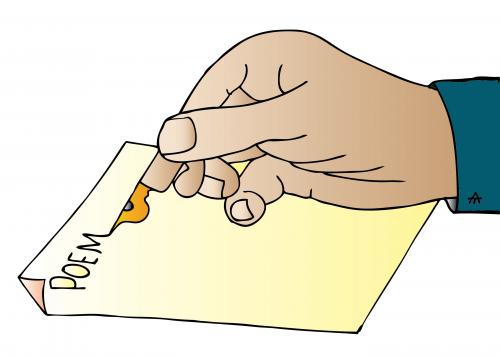About the author:
Sylvia Plath is one of the few American women of the mid-twentieth century who was an exceptional poet, a novelist, and a writer who never forgot to give her short stories a periphrastic touch, which in turn attracted her readers to delve into the inner recesses into her mind and conscience. Boston-born Plath had a fascinating academic career even before she established herself as a poet and writer; she studied at Smith College and Newnham College at the University of Cambridge. She is responsible for the advancing popularity of the genre called confessional poetry; her most celebrated works are collections called The Colossus and Other Poems and Ariel. Her semi-autobiographical novel The Bell Jar is greatly admired and was published shortly before her death. In 1932, she was born in Boston to Otto Plath, an entomologist and a professor of botany at Boston University. Plath went through depression for most of her adulthood; after being unable to meet Dylan Thomas, who she claimed as her boyfriend, she slashed her legs to see if she could commit suicide. Such incidents have inspired her novel The Bell Jar. She had to undergo electroconvulsive therapy for depression; her first documented suicide attempt was in the August of 1953. Later she got married to poet Ted Hughes on 16 June 1956. Controversies surrounded her death in 1963; some believe she had shoved her head into the oven and turned on the gas; while looking at the site evidence, some find it hard to believe that she was willing to commit suicide.
Medusa: Poetic Devices
Imagery:
Medusa is a mythical figure which has been used as an image to exemplify the character of the poet’s mother.
Line 34: “Blueberry Mary” is an image of the Virgin Mary.
Symbolism:
Line 14 and Line 25: “umbilicus” and “placenta” as symbols of the suffocation that the poet was subjected to.
Metaphor:
Line: 31: “X-ray” is a metaphor for the exposed condition of the poet.
There is much Christian imagery in the poem, such as “Blueberry Mary,” “Communion wafer,” etc.
Medusa: Summary
“Medusa” imparts a similar essence to the poem “Daddy” written by her; Medusa is concerned with Plath’s mother. The poem is like a long list of complaints that the poet rants against her mother. Written four years after the phenomenal “Daddy,” according to Plath, this was one of her best. The “you” in the poem undoubtedly refers to her mother, Aurelia. Lines like “Overexposed, like an X-ray. / Who do you think you are? “emit the anger and offense that she felt. The poem starts with the description of her mother’s situation where she houses her “unnerving head- God-ball, / Lens of mercies, / [her] stooges.” To an extent, Plath has accused her mother of punishing her, as she says in the third stanza that her mother had “steamed” her “over the sea, / Fat and Red, a Placenta.” The reference is here to her birth; maybe Plath’s depressed life made her believe that giving life to her was her mother’s fault, and doing that was just a punishment to her. She had to squeeze “the breath from the blood bells” to survive each day. She could “draw no breath/ Dead and moneyless.” Her mother, after keeping Plath in her womb, suddenly had “overexposed” her to the harsh reality of the world “like an X-ray.” The poem ends with the same tone of disappointment and withdrawal with which it had started; the poet finally makes it crystal clear that “there is nothing between
The reference is here to her birth; maybe Plath’s depressed life made her believe that giving life to her was her mother’s fault, and doing that was just a punishment to her. She had to squeeze “the breath from the blood bells” to survive each day. She could “draw no breath/ Dead and moneyless.” Her mother, after keeping Plath in her womb, suddenly had “overexposed” her to the harsh reality of the world “like an X-ray.” The poem ends with the same tone of disappointment and withdrawal with which it had started; the poet finally makes it crystal clear that “there is nothing between us,” as if she cuts off all motherly ties with her mother.
Medusa: Analysis
The poem comprises seven stanzas if the last line is considered as a stanza. Contradictory to the feeling of admiration and the strong desire that she felt to achieve freedom is nowhere better evidenced than in this poem. The poet has created two separate sets of imagery, both of which are etymologically related to the Greek mythical figure of Medusa- the natural (the Medusa jellyfish) and the mythological (the Gorgon Medusa from Greek mythology). Through these images, she explores some vital aspects of her personality that, according to her, have been influenced by her mother, including the physical, emotional, and also artistic. The poetic genius of the poem lies in the fact that the title of the poem can be directly related to her mother, Aurelia, as the genus name of the moon jellyfish is Aurelia Paulita. From her various journals, it can be gathered that Plath was affected by her mother’s constant gaze, once again reminding us of the mythical figure of Medusa, who could turn men into stone with a gaze. Primarily, intense physical attributes have been used to describe Medusa: her mouth, eyes, ears, head, umbilicus, and placenta. Plath, in the poem, has identified her mother as a monstrous figure, “paralyzing” and “Squeezing the breath from” her until she “could draw no breath.” Plath as a daughter rejects every kind of physical tie; the most convincing evidence of this is expressed through the image of the “umbilicus” (the physical contact between the mother and the child).
The particular cable “seems in a state of miraculous repair,” seemingly unable to be severed despite the daughter’s attempt to “escape.” Despite all her efforts, the mother is “always there, / Tremulous breath at the end of [her] life.” Plath, in the poem, has rejected her mother in every aspect; she refuses to accept nourishment from her mother, which is an exciting way of expressing disgust; just as Kristeva points out, “food-loathing is perhaps the most elementary and most archaic form of abjection.” It is a struggle to separate from maternal influences. In the poem, the mother’s body is identified with food that the daughter detests, even if it is offered by Virgin Mary (“Blueberry Mar”) or presented to her as a “communion wafer.” By the end of the poem, the mother is stripped of all humanity; the mother is reduced to an inhuman creature that cannot communicate through anything beyond a “hiss.” There is a sense of suffocation that is exerted upon Plath by her mother as she attacks her with an eely tentacle, a maternal umbilicus/ cable, which becomes a weapon to squeeze the life out of Plath. “Eely” is an adjective that enhances the clinginess of the mother. By the end of the poem, the daughter has decided that there is nothing between them, and her future is inevitable.
Medusa: Tone
The tone of the poem never changes throughout the seven stanzas. It bears the same tone of complaint and detachment throughout. Scholars have read deep into the poem and have discovered a connection between the two, “a spiritual connection that Plath brought to the forefront of the poem through her use of specific Christian imagery in much the same manner that she used Jewish imagery to explore the relationship between the father and daughter in poems like “Daddy.”
The poem stands out as exceptional evidence of the depression and suffocation that Plath was subjected to. Every line of the poem cries for freedom and her strife against suffocation; this, too, in some way, is a confessional poem that talks about her depression and the pain that she had to live with for most of her life.
Updated by Anjali Roongta on 24th April 2023.
Some online learning platforms provide certifications, while others are designed to simply grow your skills in your personal and professional life. Including Masterclass and Coursera, here are our recommendations for the best online learning platforms you can sign up for today.
The 7 Best Online Learning Platforms of 2022
- Best Overall: Coursera
- Best for Niche Topics: Udemy
- Best for Creative Fields: Skillshare
- Best for Celebrity Lessons: MasterClass
- Best for STEM: EdX
- Best for Career Building: Udacity
- Best for Data Learning: Pluralsight















